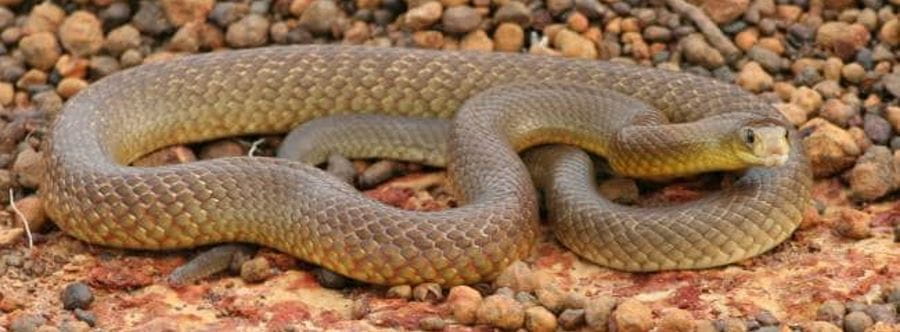
As cold-blooded reptiles, snakes are not able to regulate their body temperature, therefore they rely on the sun and warm air for their body heat. For this reason, it's most likely that you will see snakes active throughout spring and summer.
Australia is home to some 140 species of land snakes and around 32 species of sea snakes. Out of these, around 100 species are venomous, with roughly 12 species that are likely to cause death to a person if bitten. Some of these include the Brown snake, Tiger snake, Black snake, Copperhead snake and Rough Scaled snake. However, most snake bites occur when people try to capture them or kill them. Throughout Australia, there are approximately 1 to 4 deaths a year from snake bites.
The easiest way to avoid a snake bite is to stay a safe distance away and let it move away. Nevertheless, should someone be bitten by a snake would you know the signs and symptoms and what to do?
Tips for snake bite prevention:
- Over the winter months, snakes take cover in rubbish or dormant areas, so be mindful of this when summer comes around
- Wear protective clothing when outdoors or bushwalking as well as making yourself known if there are snakes around to scare them off
- If you see a snake, NEVER touch, move or kill them (this is where the majority of bites come from)
- Always have a PIT Bandage as these ensure the correct tension of the bandage when applied to a bite
Signs and Symptoms of a snake bite include:
- A bite site
- Pain around the bite site
- Burning, tingling or abnormal feeling of the skin
- Abnormal heartbeat and pain
- Breathing difficulties
- Nausea or vomiting
Treatment for a snake bite:
- Follow your primary survey (DRSABCD)
- Contact 000 immediately
- Do not wash the wound site
- Talk to, and reassure the patient
- Restrict movement as much as possible
- Apply a pressure immobilisation bandage (if able to, mark the bite site with a pen)
Dos and Don'ts when it comes to snakes and snake-prone environments:
- Do not try to catch the snake or trap the snake
- Do not apply a tourniquet to a bite as this will cut off blood supply to the limb
- Do not cut a bite site or try to suck the venom out
- Do lay still if bitten
- Do try to always carry a bandage on you when walking outdoors
- Do try to make noise when walking through the bush as this will help move snakes on
- Do have your phone with you when bushwalking so you can call for help in an emergency
Pressure Immobilisation Technique
A PIT (Pressure Immobilisation Technique) should be completed by doing the following:
- Immediate pressure over the bite site
- Apply a broad pressure bandage (10-15cm wide) firmly over the bite site
- Starting from the extremity (fingers or toes), bandage towards the torso or as much of the limb as possible
- Apply a splint to prevent movement
Identification of the venomous snake can be made from remaining venom on clothing or skin (so don’t wash the bite site).
It is also important to remember that snake venom is predominantly spread through the lymphatic system rather than the circulatory system. Therefore, a tourniquet is ineffective and often makes the situation worse.
Click below to view a snake and spider bite guide:

This information is NOT a substitute for first aid training. Royal Life Saving Society WA recommends that everyone is trained in first aid and CPR.
Why Learn first aid and CPR?
Learning first aid can save lives. People die every day from sudden cardiac arrest, because family members, friends, and bystanders don't know how to respond effectively. Cardiopulmonary resuscitation (or CPR) is easy to learn, and our training is available all over the Perth and regional areas of Western Australia to instruct people how to deal with cardiac arrest, and many other life threatening emergencies. Learning first aid is a simple way to save a life. You can prepare yourself to act in an emergency by attending one of our many first aid training courses. Please remember that "Everyone can be a lifesaver".
